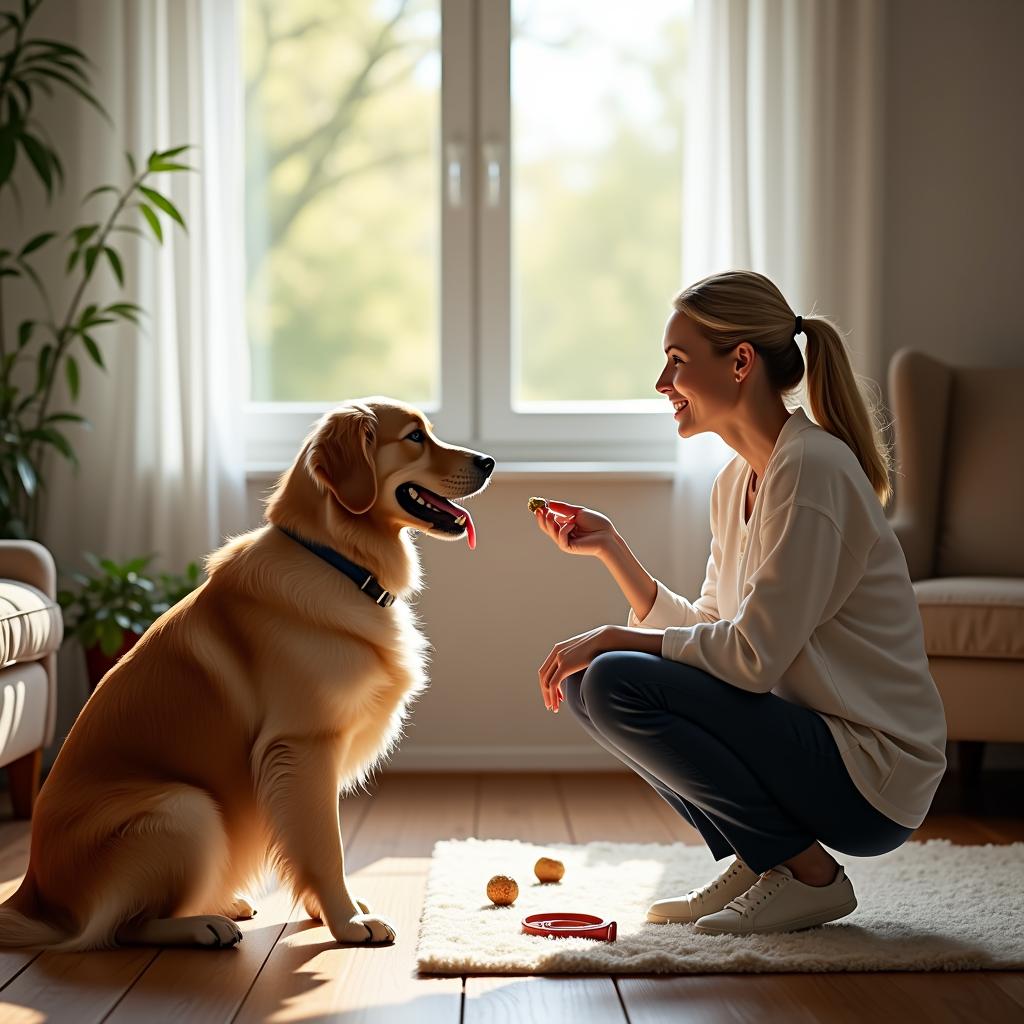Pet Training: Tips and Techniques for Positive Behavior

Training your pets isn’t just a duty; it’s a game-changer for both you and your furry companion. Seriously, when you put in the effort to train your pet, you’re not only ensuring a safer and more comfortable home but also building a rock-solid bond with your buddy. So, in this article, we’re diving deep into actionable tips and strategies that will help promote positive behavior in your pets. From nailing those basic commands to exploring specialized training methods, we’ll uncover how to create a blissful living space with your pet, leading to an awesome companionship.
Table of Contents
- Introduction
- Understanding Pet Behavior
- Basic Training Techniques
- The Importance of Positive Reinforcement
- Socialization: The Key to a Well-Adjusted Pet
- Addressing Behavioral Issues
- Advanced Training Techniques
- Benefits of Pet Training
- Conclusion
- Frequently Asked Questions (FAQ)
Introduction
Listen up, pet training is more than just barking orders—it’s an art form and a science that contributes to the well-being of both you and your beloved pet! When you train your furry friend properly, you’re not just setting the stage for a well-mannered pet, you’re also nourishing that special bond that makes pet ownership so incredible. Whether you’re new to pet parenting or a seasoned pro, getting the hang of effective training principles will totally help you crush your goals! Let’s dive into some practical tips and tricks to amp up your pet’s positive vibes!
Understanding Pet Behavior
Alright, before we jump into specific training techniques, we’ve gotta grasp the basics of how our pets think and act. Animals are like, big-time communicators through body language and sounds. If you can pick up on signals of anxiety, aggression, or happiness, you’ll totally be able to tweak your training style to fit their needs. For instance, ever seen a dog with its tail tucked? That pooch might be feeling a little threatened. On the flip side, a dog holding its tail high is probably feeling super confident and chill!
The real secret sauce to successful training is understanding what drives your pet’s behavior. Take dogs, for example. They learn by connecting certain actions to reactions. If they get a yummy treat every time they perform a trick, guess what? They’re going to want to do it again! But if they’re met with a negative vibe, they’ll be smart enough to steer clear.
Basic Training Techniques
Kicking off with some basic commands like “sit,” “stay,” and “come” is absolutely crucial when it comes to training your pet. These commands are the building blocks that lead to more complex behaviors, making it way easier to manage your pet’s actions in all sorts of situations.
Teaching Basic Commands
1. “Sit”: Start by holding a scrumptious treat just above your dog’s snout, then slowly move it back over their head. As their head goes up, their little backside will go down. Once they’ve settled down, shower them with praise and give that treat!
2. “Stay”: Get your pup to sit first. Then, hold your hand out towards them, palm facing forward, and say “stay.” Take a few steps back. If they hold their position, reward them! If they decide to move, just gently guide them back to where they started and give it another go.
3. “Come”: Use a leash in a secure area. Get that energy going by calling your dog’s name with excitement and reward them big time when they trot over to you!
The Importance of Positive Reinforcement
Trust me, if you want effective pet training, positive reinforcement is your best friend. This method focuses on rewarding good behavior to make sure it sticks. A study from the Journal of Veterinary Behavior shows that training built on positive reinforcement gets better long-term results than heavy-handed tactics. This way, you’re not just training your pet; you’re also strengthening your bond—making for a joyful and healthy relationship!
Using treats, praise, and even playtime as rewards can spark your pet’s enthusiasm for following your commands. So, every time your dog sits like a champ, reward them with a treat and a ton of upbeat praise. Over time, they’ll connect that action with something really good, and they’ll be more likely to do it again!
Socialization: The Key to a Well-Adjusted Pet
Here’s the deal: socialization is key to raising a happy, well-adjusted pet. Getting your furball used to different places, people, and other animals early on is vital—especially for puppies! It’s like the ultimate preventative measure against behavioral issues like aggression or extreme shyness.
Start those social outings when your pet is just a little one. Expose them to parks, busy streets, and homes filled with different faces. The more adventures they have, the more confident they’ll grow!
Addressing Behavioral Issues
Let’s be real: understanding common behavioral quirks like jumping, barking, or chewing is super important for tackling them effectively. A lot of these habits come from boredom or a lack of proper training.
Strategies for Addressing Issues
– For jumping, just ignore your pet until they calm down, then reward them for a proper greeting. This helps them learn that staying calm means getting attention.
– When it comes to barking, figure out what’s triggering them and distract them with a toy or treat. Gradually help them get used to whatever gets them barking by rewarding them when they’re quiet.
– To solve the chewing dilemma, ensure they have approved chew toys. Redirect them to these toys when they start gnawing on your favorite pair of shoes!
Advanced Training Techniques
Once your pet is rocking those basic commands, why not mix things up with some advanced techniques? Advanced training can include everything from agility training to service dog training or even specialized behavior training.
Agility Training
Agility training doesn’t just boost your pet’s physical skills; it’s also a fantastic bonding experience. Set up a fun obstacle course in your yard with jumps, tunnels, and weave poles. Encourage your furry pal to navigate through the course, rewarding them with treats and positive vibes!
Service Dog Training
If your pet’s got the right personality, they might just shine in service dog training! This prepares them to assist people with disabilities, providing invaluable support and companionship. Service dog training typically revolves around specialized commands and tasks that make life easier for their handlers.
Benefits of Pet Training
The perks of training your pet are massive—they totally uplift the quality of life for both your pet and you! A well-trained pet enjoys greater freedom and is generally safer, while you get the peace of mind that comes from being able to control your pet in various situations.
What’s more, a well-behaved pet is often more welcome in public spaces like parks and shops, opening up tons of opportunities for socialization and fun memories together. How cool is that?
Conclusion
Let’s be honest: every pet owner knows training is a lifelong adventure, not just a one-and-done task. Keeping up with regular training sessions not only reinforces good behavior but also provides a mental workout for your pet. Remember, using positive reinforcement and understanding their behavior can really smooth out the training process.
So why not take the plunge into strengthening your bond with your pet? Grab these tips and techniques, and weave them into your daily routine. And when you’re on the hunt for some quality pet products to aid in your training journey, don’t forget to visit Mega Choice Bazaar.
Frequently Asked Questions (FAQ)
1. How long should training sessions last?
Keep your training sessions short and sweet—around 5-15 minutes for young pets, extending to 20-30 minutes for older ones. Short sessions help your pet stay engaged!
2. What is the best age to start training my pet?
The earlier, the better! Starting training when your pet is just a little pup or kitten—around 8 weeks old—is ideal. Early training establishes good habits and adaptability.
3. How do I correct bad behavior without punishment?
Instead of going for punishment, redirect your pet’s attention to a positive behavior you want to see and shower them with rewards when they do it!
4. Can I train my pet at home?
Absolutely! Many pet training techniques can be practiced right at home. Explore online resources and books for guidance to back up your training efforts.
5. Is socialization really important for my pet?
You bet! Socialization is crucial for pets to interact confidently and safely with people and other animals. It helps reduce fear-based behaviors and boosts their overall happiness.









Leave a comment